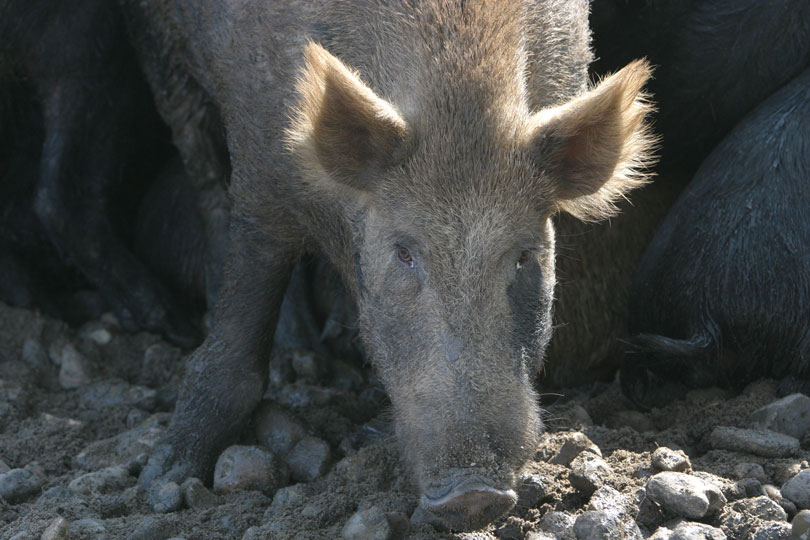By Haley Herzog
TFB Communications Intern
Feral hogs continue to pose a threat to much of Texas despite management efforts.
A recent report from the Texas Parks and Wildlife Department estimated a total population of more than 1.5 million wild pigs in Texas.
A Texas A&M AgriLife Extension Service expert addressed the growing problem of wild pigs with many Texas farmers and ranchers at this week’s Texas Farm Bureau (TFB) Summer Leadership Conference.
Each generation of wild pigs continues to show a decrease in domestic characteristics, thus becoming more tolerant to diseases and increasing the threat of transmission not only to humans, but livestock as well.
“We have some concerns about transmission of Brucellosis of various kinds, transmission of diseases to and from humans,” Dr. John Tomecek, assistant professor and Texas A&M AgriLife Extension wildlife specialist, said in an interview with the TFB Radio Network.
The other issue farmers and ranchers continue to monitor is the progress of chemical control methods.
“We hope to see label applications, or completed labels, from those in the next couple of years and right now we’re talking to folks about when and where those may or may not be useful,” Tomecek said. “As always, we’re working to control pig numbers, and get the word out to folks to really look for a complete landscape control effort.”
Tomecek believes that landscape control is a management tool to work toward eradicating wild pigs.
“Some folks have speculated that due to a change in land ownership—folks moving in from other areas perhaps without an agricultural background—folks simply don’t know what the problems with wild pigs are,” Tomecek said.
Damages caused by feral hogs include: destruction of habitat and agriculture commodities; damaged agricultural crops, fields, and livestock feeding and watering facilities caused by excessive rooting; destabilized wetland areas, springs, creeks and tanks by excessive wallowing; predation on fawns, young lambs and kid goats; and consumption of eggs from ground nesting birds, such as turkeys and quail.
“One of the things we see with feral hogs is an impact on wildlife either directly by consuming, predating upon wildlife, or in times just destroying habitat taking up vital resources,” Tomecek said.
The growing impact of wild pigs continues to strengthen and has become one of the biggest issues for Texas farmers, ranchers, wildlife, livestock and the environment.
AgriLife Extension said that landscape management is the first step toward overcoming the state’s wild pig issue.
“I tell people we target those areas where pigs aren’t as bad yet and we have an opportunity to step back the damage,” Tomecek said. “When you’re just starting to see the first pigs in an area, that’s when it’s time to hit them hard and hit them fast and bring those numbers down and clear that area of pigs.”
“Eradication, I think, should always be the goal, but with the reality check of understanding that what we first have to do is get a rope around the numbers and be able to control expansion,” Tomecek said. “But once we do, if we do, it’ll be marching it toward eradication.”

